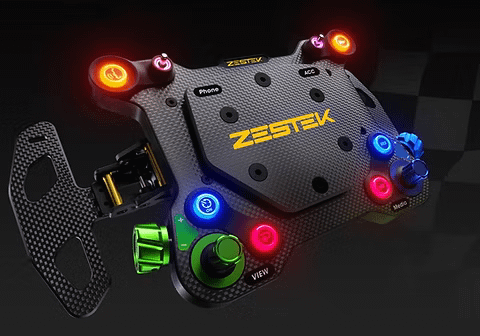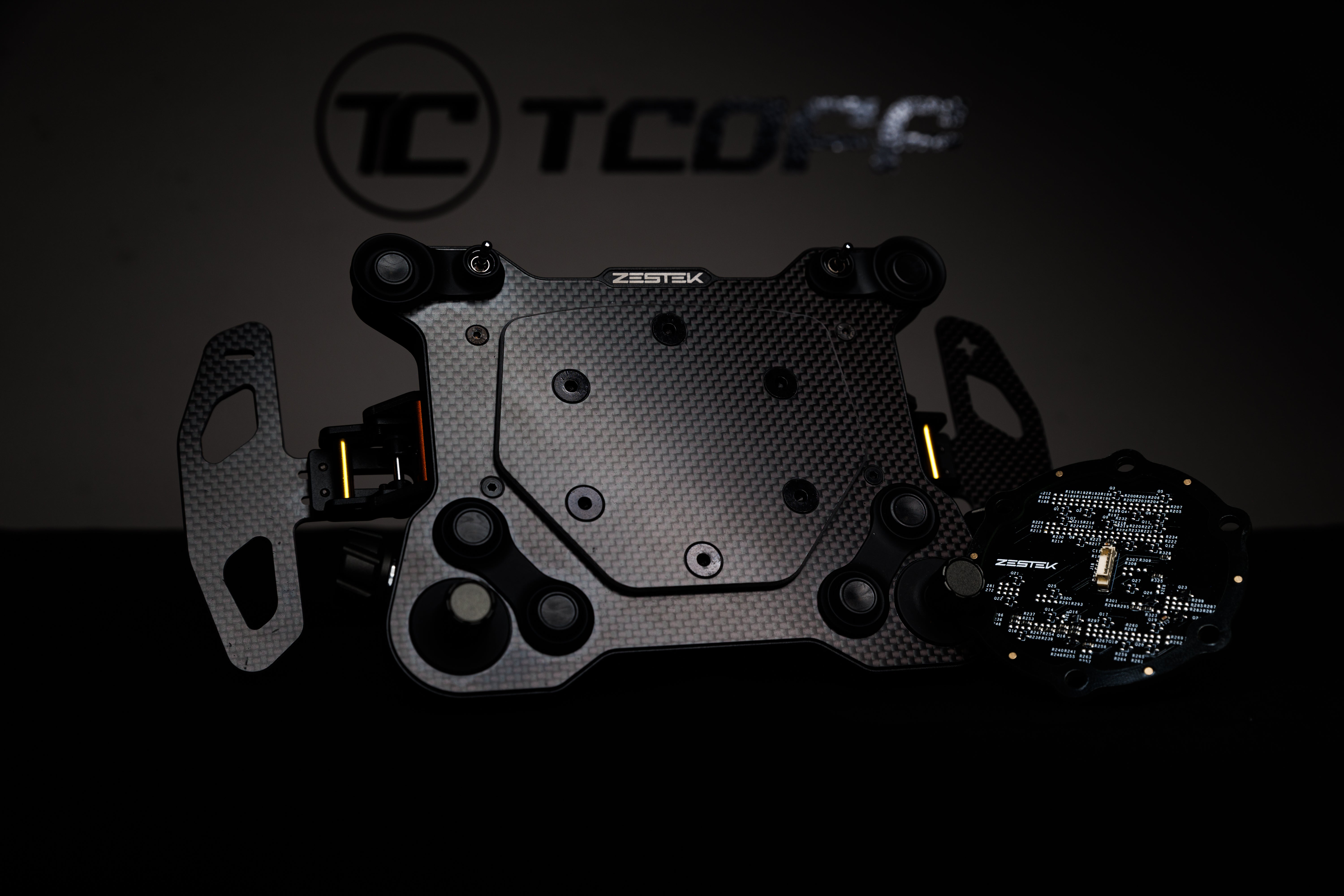Introduction to the Zestek Hub Chamba System
The Zestek Hub Chamba System represents a significant advancement in automotive steering technology. Designed to integrate seamlessly with modern vehicles, this system offers enhanced control, customization, and connectivity. At its core, the Zestek Hub Chamba System combines a high-quality steering hub with advanced electronic interfaces, allowing drivers to experience a more responsive and personalized driving experience.
One of the standout features of the Zestek Hub is its compatibility with various vehicle models, ensuring that a wide range of drivers can benefit from its capabilities. The system’s design emphasizes both functionality and aesthetics, providing a sleek appearance without compromising performance. With the integration of customizable buttons and LED indicators, drivers can tailor the system to their preferences, enhancing both safety and convenience on the road.
Moreover, the Zestek Hub Chamba System is engineered with durability in mind. Constructed from high-quality materials, it withstands the rigors of daily driving while maintaining its performance and appearance. This commitment to quality ensures that drivers can rely on the system for years to come, making it a worthwhile investment for those seeking to upgrade their vehicle’s steering capabilities.
Understanding the CAN Hub Steering Wheel
A CAN hub steering wheel is an advanced steering interface that utilizes the Controller Area Network (CAN) protocol to communicate with a vehicle’s electronic systems. This technology allows for real-time data exchange between the steering wheel and various vehicle components, enabling features such as customizable controls, enhanced safety systems, and improved driver feedback.
In the context of the Zestek Hub Chamba System, the CAN hub steering wheel serves as the central interface for driver inputs. By leveraging the CAN protocol, the system ensures that commands from the steering wheel are transmitted efficiently and accurately to the vehicle’s systems. This integration enhances the overall driving experience by providing responsive control and seamless interaction with the vehicle’s features.
Furthermore, the CAN hub steering wheel supports the addition of programmable buttons and indicators, allowing drivers to customize their controls based on personal preferences or specific driving conditions. This level of customization not only improves convenience but also contributes to safer driving by reducing the need for drivers to divert their attention from the road.
Warranty Coverage for Zestek Products
Zestek offers a comprehensive warranty for its products, including the Hub Chamba System. Typically, the warranty period spans 12 months from the date of purchase, covering defects in materials and workmanship under normal use. This warranty ensures that customers can have confidence in the quality and reliability of their Zestek products.
To initiate a warranty claim, customers are advised to contact Zestek through their official channels, providing proof of purchase and a detailed description of the issue. The company will then assess the claim and, if valid, repair or replace the defective product at no additional cost to the customer. It’s important to note that the warranty does not cover damages resulting from misuse, unauthorized modifications, or accidents.
For customers purchasing Zestek products through authorized dealers or platforms like Amazon, it’s recommended to retain all purchase documentation and register the product, if applicable, to facilitate any future warranty claims. By adhering to these guidelines, customers can ensure a smooth and efficient warranty process should any issues arise.
The Mechanics of Hub Steering
Hub steering is a design approach where the steering mechanism is integrated into the wheel hub assembly, allowing for more direct and responsive control of the vehicle’s direction. This configuration reduces the complexity of traditional steering systems by minimizing the number of moving parts and potential points of failure.
In the Zestek Hub Chamba System, hub steering is implemented to enhance the driver’s connection to the vehicle. By streamlining the steering components, the system provides more immediate feedback and precise control, which is particularly beneficial in performance driving scenarios. Additionally, the integration of electronic controls within the hub allows for advanced features such as customizable steering resistance and feedback levels.
This modern approach to steering design not only improves performance but also contributes to the overall safety and reliability of the vehicle. By reducing mechanical complexity and incorporating electronic enhancements, hub steering systems like Zestek’s offer a compelling solution for drivers seeking both innovation and dependability in their vehicles.
Functions and Importance of the Wheel Hub
The wheel hub is a critical component in a vehicle’s suspension and steering systems. It serves as the mounting point for the wheel and connects it to the vehicle’s axle, allowing for smooth rotation and supporting the vehicle’s weight. Additionally, the wheel hub often houses the wheel bearings, which facilitate low-friction movement and contribute to overall driving comfort.
In modern vehicles, wheel hubs may also incorporate sensors for systems like anti-lock braking (ABS) and traction control. These sensors monitor wheel speed and provide data to the vehicle’s electronic control units, enabling real-time adjustments to maintain stability and safety. Therefore, the wheel hub plays a vital role not only in mechanical function but also in the vehicle’s electronic safety systems.
Maintaining the integrity of the wheel hub is essential for vehicle performance and safety. Regular inspections and timely replacements, when necessary, can prevent issues such as uneven tire wear, vibrations, or compromised handling. By understanding the importance of the wheel hub, drivers can take proactive steps to ensure their vehicle remains in optimal condition.
Understanding Warranty Expiry
Warranty expiry refers to the end of the period during which a manufacturer or seller agrees to repair or replace a product if necessary. Once this period concludes, the responsibility for maintenance and repairs typically shifts to the product owner, and any services rendered may incur additional costs.
It’s crucial for consumers to be aware of their product’s warranty duration and terms. Understanding when the warranty expires allows for timely servicing and addressing potential issues before they become more significant problems. Additionally, some manufacturers offer extended warranties or service plans that can provide continued coverage beyond the standard warranty period.
To maximize the benefits of a warranty, consumers should keep detailed records of their purchases, including receipts and warranty documentation. Registering products with the manufacturer, when possible, can also streamline the process of making claims and receiving support.
Warranty Details for Sumitomo Fiber Products
Sumitomo Electric, a renowned manufacturer of fiber optic products, offers warranties that reflect their commitment to quality and reliability. While specific warranty terms can vary based on the product and region, Sumitomo typically provides warranties that cover defects in materials and workmanship for a defined period.
For instance, certain Sumitomo fiber optic cables may come with warranties extending up to 20 years, ensuring long-term performance and customer satisfaction. These warranties often require that the products be installed and maintained according to specified guidelines to remain valid.
Customers seeking detailed warranty information for Sumitomo fiber products should consult the official documentation provided with their purchase or contact authorized Sumitomo distributors. Understanding the warranty terms can help in planning maintenance schedules and ensuring the longevity of the fiber optic systems.
Duration of Factory Warranties
Factory warranties, also known as manufacturer’s warranties, are assurances provided by the vehicle manufacturer covering specific repairs and services for a set period or mileage. Typically, these warranties last between 3 to 5 years or up to 60,000 miles, whichever comes first.
The coverage often includes the vehicle’s powertrain, electrical systems, and other essential components. However, the exact terms can vary based on the manufacturer and model. Some manufacturers offer extended warranties or additional coverage for certain parts, providing peace of mind to vehicle owners.
It’s advisable for vehicle owners to familiarize themselves with their specific warranty terms and adhere to recommended maintenance schedules. Regular servicing at authorized centers can ensure that the warranty remains valid and that any potential issues are addressed promptly.
Mechanics of Hub Drive Systems
Hub drive systems are configurations where the motor is integrated directly into the wheel hub, eliminating the need for traditional drivetrain components like chains or belts. This design is commonly found in electric bicycles and some electric vehicles, offering a compact and efficient solution for propulsion.
The primary advantage of hub drive systems is their simplicity and ease of maintenance. By housing the motor within the wheel hub, these systems reduce mechanical complexity and potential points of failure. Additionally, hub drives provide a quieter and smoother ride, as there are fewer moving parts involved.
However, hub drive systems may have limitations in terms of torque and performance on steep inclines compared to mid-drive systems. Therefore, the choice between hub drive and other configurations depends on the specific use case and performance requirements of the vehicle.
Defining the Hub Center
The hub center in vehicle design refers to the central part of the wheel hub that interfaces directly with the axle or spindle. It is a critical mechanical and geometric point from which other wheel components are aligned, including brake discs, wheel studs, and bearings. In the context of advanced systems like the Zestek Hub Chamba System, the hub center becomes even more vital because it serves as the anchoring point for electronic and mechanical integrations.
A properly designed hub center ensures that the wheel rotates evenly without causing vibrations or unnecessary wear. It maintains alignment under dynamic driving conditions, which helps in preserving tire integrity, fuel efficiency, and steering accuracy. When performance systems are added—like smart steering wheels, programmable modules, and sensor packs—the hub center must be engineered with precision to accommodate the added load and complexity.
Understanding the role of the hub center is essential for anyone looking to upgrade or replace wheel-related components. A poorly aligned or damaged hub center can lead to significant issues, including compromised handling, increased braking distance, or even system failure over time.
How Long Do Zestek Products Last?
The lifespan of Zestek products, including the Hub Chamba System, typically ranges from 5 to 10 years, depending on usage conditions, maintenance practices, and environmental exposure. Zestek designs its systems using premium-grade materials such as anodized aluminum, reinforced polymers, and automotive-grade electronic components. These materials are selected to resist corrosion, mechanical fatigue, and thermal expansion.
Zestek products are tested under rigorous standards to withstand high vibration, fluctuating temperatures, and moisture. In real-world use, when the system is installed correctly and not subjected to abuse or unauthorized modifications, users can expect many years of reliable service.
It’s worth noting that while the core mechanical elements may last nearly a decade, electronic features like button modules, LED indicators, and wireless transmitters may show signs of wear earlier. However, these components are often modular and can be replaced individually without needing to discard the entire system.
Regular inspection and cleaning of the hub components, ensuring firmware updates (if applicable), and avoiding exposure to harsh chemicals will further extend the life expectancy of any Zestek product.
The Technology Behind Chamba Hub Operation
The Chamba Hub integrates both mechanical and electronic systems in a compact form, offering enhanced vehicle feedback and control. The name “Chamba” in this context likely refers to a proprietary naming convention by Zestek to denote a specific series or model tier of their hub systems.
Mechanically, the Chamba Hub connects to the steering column and wheel assembly via precision-machined flanges and fasteners. Internally, the system features a multi-channel slip ring or wireless transmission module that allows signals to be transmitted even while the wheel is rotating. This enables buttons, LED indicators, and haptic feedback motors to function without wiring entanglement.
Electronically, the Chamba Hub interfaces with the vehicle’s CAN Bus system or other control modules through either a wired or wireless connection. This link enables the driver to access various in-vehicle functions—such as volume control, traction management, and cruise control—directly from the steering wheel. Each button or rotary input is programmable, allowing for real-time customization.
The Chamba Hub often includes safety features such as power failover protocols, watchdog timers, and error diagnostics, making it not just a performance tool but also a reliable piece of driver-assistance hardware.
Maintenance Tips for the Zestek Hub Chamba System
To ensure the Zestek Hub Chamba System performs optimally over time, users should adhere to a few basic maintenance protocols. First, regular inspection is crucial—check for any signs of loosening bolts, wear on the connectors, or surface corrosion, especially if the vehicle is used in coastal or humid environments.
Electronic components such as button pads and LED indicators should be cleaned with a soft microfiber cloth to avoid scratching. Avoid using harsh solvents, which could damage the coatings or cause deterioration of electronic seals.
If the system features wireless transmission or programmable firmware, check periodically for updates from Zestek’s official website or through a connected diagnostic tool. Updates often include bug fixes, new feature rollouts, and optimization patches.
Lubricate any mechanical contact points sparingly with manufacturer-recommended greases. Over-lubrication or the use of non-compatible materials can attract dust and grime, leading to premature wear.
Lastly, if the system ever shows signs of malfunction—such as non-responsive buttons or error codes—it is best to contact Zestek’s technical support rather than attempt DIY fixes, which could void the warranty or cause further damage.
Troubleshooting Common Zestek Hub Issues
Like any advanced automotive system, the Zestek Hub Chamba System may occasionally encounter operational issues. Understanding these common problems and how to resolve them can save time and prevent further complications.
1. Non-Responsive Buttons:
If one or more buttons fail to register, check for a loose connection or low battery in wireless modules. In wired setups, ensure all connectors are properly seated. If the issue persists, perform a reset or firmware re-flash.
2. Steering Wheel Misalignment:
Improper installation or a misaligned hub center can lead to the wheel being off-center. This should be corrected by loosening the mounting bolts and realigning the wheel, then tightening it to the recommended torque.
3. LED Indicator Failure:
In most cases, LED issues are caused by faulty wiring or a failed diode. If only one light is affected, it may be a localized component issue. Replacing the LED module or consulting Zestek support is recommended.
4. Wireless Interference:
If your wireless Chamba Hub experiences latency or dropped signals, verify that no other RF devices are operating on the same frequency band in the cabin. Re-pairing the system or updating the firmware can often resolve these glitches.
5. Error Codes on Diagnostic Tools:
Modern vehicles may throw error codes when unfamiliar systems are installed. To avoid this, ensure the Chamba Hub firmware is compatible with the vehicle’s ECU and that CAN configurations match manufacturer specs.
How to Register Your Zestek Hub for Warranty
Registering your Zestek Hub Chamba System is essential to activate your warranty and receive product support. After purchase, visit the official Zestek website and navigate to the “Product Registration” section. You’ll be prompted to input the product serial number, purchase date, vendor name, and your personal contact information.
This step is particularly crucial if the product was purchased from a third-party seller or online marketplace like Amazon. Zestek may require proof of purchase (such as a receipt or invoice) in the event of a claim. Registration also allows Zestek to notify you of any product recalls, firmware updates, or maintenance advisories.
Some high-tier Zestek products may even come with bonus perks upon registration, such as extended warranty coverage, complimentary accessories, or priority support services.
Once registered, users can access their warranty dashboard to file claims, track the warranty duration, and request service appointments directly. Keeping your product registered ensures you’re covered in case of defects and that you stay updated with any software improvements or recalls.
Final Thoughts on the Zestek Hub Chamba System
The Zestek Hub Chamba System stands at the intersection of innovation, functionality, and performance-driven design. Whether you’re an automotive enthusiast, a professional driver, or a tech-savvy car owner looking to upgrade your vehicle’s control interface, this system offers a compelling package. From its seamless integration with modern CAN Bus architecture to its modular steering wheel interface and customizable control layout, the Chamba system truly exemplifies the future of steering hub technology.
The robust construction ensures long-term durability, while the warranty support and flexible configurations provide added value. Zestek has clearly committed itself to not just creating another aftermarket product, but a precision-engineered solution tailored to meet modern automotive demands. In answering essential user questions—like “how does hub steering work?” and “what is the main function of the hub?”—this article has clarified the many benefits and mechanics involved in this high-end system.
Additionally, we’ve explored detailed insights into warranty coverage, lifespan, drive functionality, hub center significance, and diagnostic practices. The Zestek Hub Chamba System is more than just an accessory—it is a gateway to refined control, enhanced safety, and tech-forward driving experiences.
As automotive technologies continue to evolve, investing in a trusted and future-proof hub solution like Zestek ensures you’re always ahead of the curve. With precision engineering and responsive support, the Zestek Hub Chamba System remains one of the most desirable choices for any performance-minded driver.




